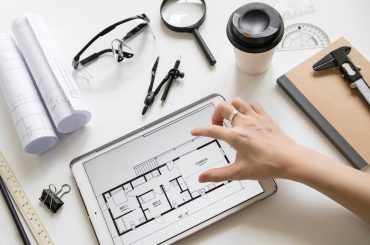Intangible Spaces
So do we design everything that exists around us? Can we plan everything to the minutest of the details? can every nook and corner be put to good use? These are the questions that will formulate the meaning of intangible spaces. Before understanding the meaning of intangible let’s have a look at tangible spaces. A programmed space made to heighten the sense of interaction and involvement could be defined as a tangible space. It is always planned to keep in mind the points of interest and the degree of involvement depending upon the place and the type of people. But ask yourself, the left-out spaces between the buildings, the nooks, and corners of the streets that you played in, was it all planned?

There are many households, especially in India which are not planned at all. These came up as a necessity for housing. The same goes for the numerous streets and small corners at the end of your house. But you did have a great time in your childhood there, didn’t you? whether it was playing hide and seek or just running around with your friends, all those cherishable moments from your childhood were spent in these places. These are the intangible spaces. Spaces that could not be planned but still are used very actively.
The parks in big cities with all the amenities and sporting apparatus, how often do you think kids go there to play? In my personal observation, I have seen many such parks being left unattended and not a sign of laughter. This is because it is made in a location that is always not accessible for everyone and every small thing for kids’ enjoyment is planned out. People especially kids cannot be contained like that. Instead, they should be allowed to enjoy open untouched spaces.
This idea of unplanning stands true for the interior spaces as well. When you are planning a house or an open space or the interior do not plan everything. Leave some for the imagination. That is one way to create a multifunctional space. Let the kid in you explore the various possibilities. Planning is necessary, yes, it helps in determining the space requirement however unplanning a space is important as well. Intangible spaces are something that comes up on their own as a result of space exclusion from planning. Speaking from personal experience I enjoy these spaces as they are untainted by planning. The underside of a tree in a courtyard, the long corridors, the terraces all of these places can be used to create something of our own. It depends from person to person on how that is done.
This concept of intangibility stays true for city-scale as well. Planning a garden or a park is fine, in fact, it’s essential but within that, some portion of the space should be left untouched which could be transformed into any desired space by the demography of people. For instance, the big boulders or rocks could be used for seating spaces instead of just putting up furniture. Some areas with grass could be left untouched so that people can enjoy that space instead of putting cobblestones to create an artificial sitting.
Everyone has a different view regarding open spaces and the degree of likeness for certain spots, so if we are considering the view of the ones who like the plan why not leave some space for those who like the planning




